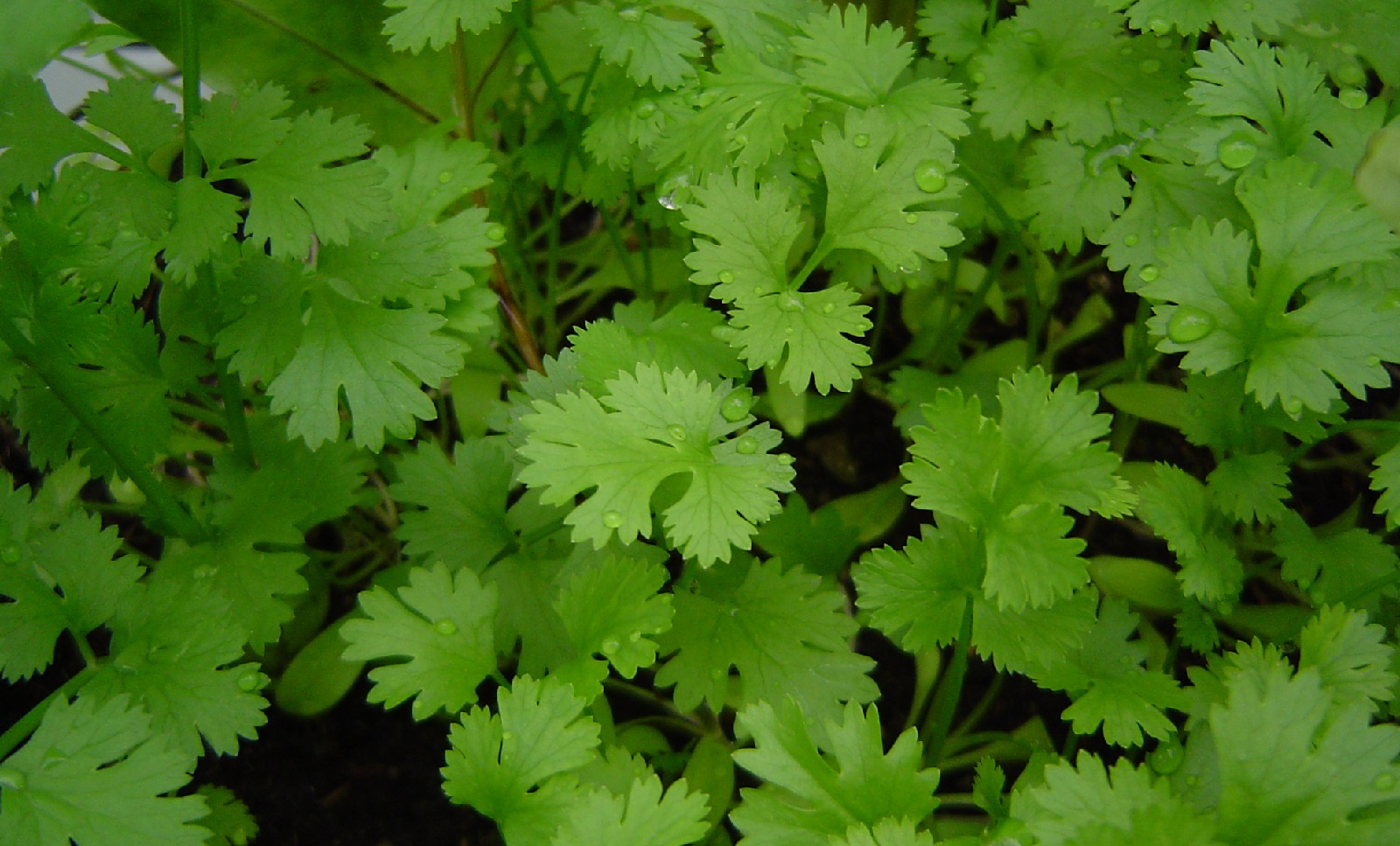Grow Coriander With These Companion Plants For A Healthy Thriving Garden
Cilantro Companion Planting: A Guide to Growing a Healthy Thriving Garden
Cilantro is a delicious and versatile herb that can be used in a wide variety of dishes. It's also a great companion plant for other vegetables and flowers, as it helps to repel pests and attract beneficial insects.
In this blog post, we'll discuss the benefits of companion planting with cilantro, and we'll recommend some of the best companion plants for cilantro. We'll also provide some tips on how to grow cilantro successfully.
Benefits of Companion Planting with Cilantro
There are many benefits to companion planting with cilantro. Some of the most important benefits include:
- Pest control: Cilantro's strong scent helps to repel a variety of pests, including aphids, spider mites, and whiteflies. This can help to protect your other plants from damage.
- Attracting beneficial insects: Cilantro's flowers attract beneficial insects, such as ladybugs, lacewings, and hoverflies. These insects help to control pests, which can further protect your garden.
- Improving soil quality: Cilantro is a nitrogen-fixing plant, which means that it helps to improve the nitrogen content of the soil. This can benefit other plants in the garden.
- Competitive balance: Companion planting can help to create a more balanced garden, where plants do not compete for resources. This can lead to healthier and more productive plants.
Best Companion Plants for Cilantro
There are many different companion plants that can be grown with cilantro. Some of the best include:
- Tomatoes: Tomatoes and cilantro are a great combination, as tomatoes provide shade for cilantro and cilantro helps to repel pests from tomatoes.
- Peas and beans: Peas and beans are nitrogen-fixing plants, which means that they help to improve the nitrogen content of the soil. This can benefit cilantro, as it is a heavy feeder.
- Leafy vegetables: Cilantro's flowers attract beneficial insects that help to control pests that can damage leafy vegetables.
- Asparagus: Cilantro helps to repel asparagus beetles, which can damage asparagus plants.
- Tall flowers: Tall flowers, such as marigolds, cosmos, and sunflowers, can provide shade for cilantro and help to attract beneficial insects.
Tips for Growing Cilantro
Cilantro is a relatively easy herb to grow, but there are a few things you can do to ensure success:
- Plant cilantro in full sun or partial shade. Cilantro prefers full sun, but it can tolerate some shade in the heat of summer.
- Plant cilantro in well-drained soil. Cilantro does not like wet soil, so make sure the soil drains well.
- Water cilantro regularly. Cilantro needs regular watering, especially during hot weather.
- Fertilize cilantro monthly. Use a balanced fertilizer, such as a 10-10-10 fertilizer.
- Pinch back cilantro regularly. Pinching back cilantro will encourage the plant to bush out and produce more leaves.
Conclusion
Cilantro is a delicious and versatile herb that can be grown easily in the garden. Companion planting with cilantro can help to repel pests, attract beneficial insects, and improve soil quality. By following these tips, you can grow a healthy and thriving garden of cilantro.
Coriander is a versatile herb that can be used in a variety of dishes. But did you know that there are certain plants that can actually enhance the flavor of coriander? These are known as "coriander companions."
One of the best coriander companions is basil. Basil has a similar flavor profile to coriander, but with a slightly sweeter note. When these two herbs are combined, they create a delicious and complex flavor that is perfect for salads, soups, and stir-fries.
Another great coriander companion is mint. Mint has a refreshing and minty flavor that can help to balance out the slightly sharp flavor of coriander. This combination is especially good in chutneys, sauces, and marinades.
If you're looking to add some extra flavor to your coriander dishes, be sure to try some of these coriander companions. You won't be disappointed!
FAQ of coriander companion
Question 1: What are the best companion plants for coriander?
Answer: Coriander is a great companion plant for many other herbs, including dill, anise, parsley, carrots, and tomatoes. These plants all benefit from each other's presence, as they help to attract beneficial insects, deter pests, and improve the overall health of the garden.
Question 2: What are the benefits of planting coriander with other herbs?
Answer: There are many benefits to planting coriander with other herbs. For example, coriander can help to attract beneficial insects, such as ladybugs and hoverflies, which prey on pests that can damage other plants. Coriander can also help to deter pests, such as carrot flies and cabbage moths. Additionally, coriander can help to improve the overall health of the garden by attracting pollinators and providing shade for other plants.
Question 3: What are some common pests and diseases that can affect coriander?
Answer: The most common pests that can affect coriander are aphids, spider mites, and whiteflies. These pests can be controlled with insecticidal soap or neem oil. Some common diseases that can affect coriander include leaf spot, rust, and powdery mildew. These diseases can be prevented by planting coriander in well-drained soil and avoiding overhead watering.
Question 4: How do I harvest coriander?
Answer: Coriander can be harvested when the leaves are young and tender. To harvest, simply snip off the leaves with a pair of scissors. You can also harvest the seeds when they are ripe. To do this, wait until the seed pods have turned brown and dry. Then, simply collect the seeds and store them in an airtight container.
Question 5: How do I store coriander?
Answer: Coriander leaves can be stored in the refrigerator for up to 3 days. To do this, simply wash the leaves and pat them dry. Then, place them in a sealed container or bag. Coriander seeds can be stored in an airtight container in a cool, dark place for up to 1 year.
Image of coriander companion
5 different images of "coriander companion" from Pinterest:
- Cilantro and mint
 This is a classic combination that is often used in Mexican and Middle Eastern cuisine. The two herbs have a refreshing, citrusy flavor that pairs well with a variety of dishes.
This is a classic combination that is often used in Mexican and Middle Eastern cuisine. The two herbs have a refreshing, citrusy flavor that pairs well with a variety of dishes. - Cilantro and lime
 Another popular combination, cilantro and lime is often used in salsas, marinades, and cocktails. The lime juice helps to brighten the flavor of the cilantro, while the cilantro adds a freshness that complements the acidity of the lime.
Another popular combination, cilantro and lime is often used in salsas, marinades, and cocktails. The lime juice helps to brighten the flavor of the cilantro, while the cilantro adds a freshness that complements the acidity of the lime. - Cilantro and garlic
 This is a savory combination that is often used in Asian cuisine. The garlic adds a richness and depth of flavor to the cilantro, while the cilantro helps to balance out the pungency of the garlic.
This is a savory combination that is often used in Asian cuisine. The garlic adds a richness and depth of flavor to the cilantro, while the cilantro helps to balance out the pungency of the garlic. - Cilantro and tomatoes
This is a simple but delicious combination that is often used in salads, salsas, and soups. The tomatoes add a sweetness and acidity to the cilantro, while the cilantro adds a freshness that complements the tomatoes.
- Cilantro and avocado
 This is a creamy and flavorful combination that is often used in guacamole, salads, and tacos. The avocado adds a richness and creaminess to the cilantro, while the cilantro adds a freshness that complements the avocado.
This is a creamy and flavorful combination that is often used in guacamole, salads, and tacos. The avocado adds a richness and creaminess to the cilantro, while the cilantro adds a freshness that complements the avocado.
Post a Comment for "Grow Coriander With These Companion Plants For A Healthy Thriving Garden"